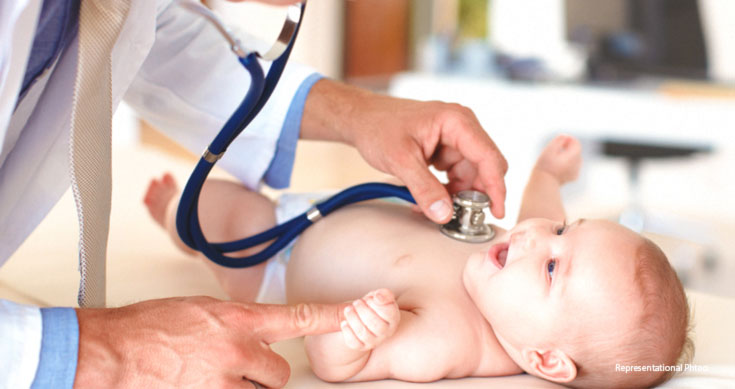Milan: The city of Milan got cases of children being brought with symptoms which dint seem to be similar to coronavirus since early March. The new disease occurs in children who are either infected with the virus or come in contact with a patient who is covid-19 positive.
The Papa Giovanni XXIII Hospital’s pediatric intensive care unit is one of Italy’s largest with 16 highly-equipped beds to treat kids. Children from across the country come to Milan to see their specialists, track their improvements, or receive organ transplants. By late March, 500 of the hospital’s nearly 1,000 regular beds were given to adults with COVID-19, and only a couple of pediatric ICU beds had been left unassigned. The pediatric team had been caring for adults with the respiratory illness while continuing interventions on children whose appointments could not be postponed.
The doctors at the Milan hospital had been seeing pediatric patients coming in the emergency wards with an inflammatory syndrome which dint seem to be related to coronavirus. However, they did not take Kawasaki disease into account.
Dr D’Antiga, the chief pediatrician at the hospital said, “We were expecting respiratory symptoms. We were wondering where the children were? Were they also involved [in COVID-19 cases] and to what extent? We were not thinking about Kawasaki disease at all.”
Among the children getting admitted, some of them were experiencing a shock. They had myocarditis, risking the circulation of their blood, along with high fever and rashes. Some of them need ventilators but weren’t found to be infected with coronavirus. Just two tested positive for covid-19 as many others had produced antibodies against it. They did get infected with coronavirus, had overcome it too, but were actually suffering from something new.
“We said, that’s quite unusual. We usually see two or three [Kawasaki disease] patients a year, now we have three in a week. Then over 10 days we’ve seen another seven. This must be related to the epidemic,” Dr D’Antiga recalled.
The doctors then expected it to be the Kawasaki disease whose symptoms include high persistent fever, conjunctivitis and rashes with children’s tongues, throats and lips reddened, and their hands and feet often swollen, with redness in the palms and soles. Some children develop an enlarged lymph node on one side of the neck. But this disease is presented in children below 5 years age and the ones in Milan had one case in a person of 16 years age as well.
Doctors from London, Bosto, Geneva, Genoa and Barcelona then started having Zoom calls with the Milan doctors talking about similar pediatric patients in their hospitals. They named the new illness paediatric multisystem inflammatory syndrome (PMIS) or multisystem inflammatory syndrome in children (MIS-C). It is still not named officially yet and is being described its symptoms, and prescribed a course of treatment.
Some PMIS patients require support from machines called ECMO units. These are machines which do the work of the heart and lungs via tubes and pumps outside the body, allowing doctors to install countermeasures against the illness.
Many of the children affected with the new disease have to spend more than a week in the ICU. “I’m happy to say that a great majority of these kids are recovering. With good supportive care, and intervention, there is recovery,” said Dr. Adrienne Randolph, a senior associate of critical care medicine and professor of anaesthesia and paediatrics at BCH.
By early May, New York, New Jersey, Massachusetts and Connecticut reported clusters of children with PMIS and three deaths and doctors believe that there are more. “People are, as we speak, working on this across over 65 sites. They’re spending long hours filling out the data and asking us questions to ensure their cases meet the criteria for reporting,” said Dr. Randolph.
Doctors also believe that it is important to study on this new disease aggressively so as to develop a vaccine and know more about its risks.
The World Health Organization (WHO) started a working surveillance group led by doctors from Canada, Spain, the US, the UK and India, hoping to coordinate the incoming data.
Children are also dying from PMIS which is being told to be similar to Kawasaki disease. Yet, it is different from it with the former being absent in countries where the former hit widely. As of now, no vaccine is available for the new disease and no solid information is present as well.







